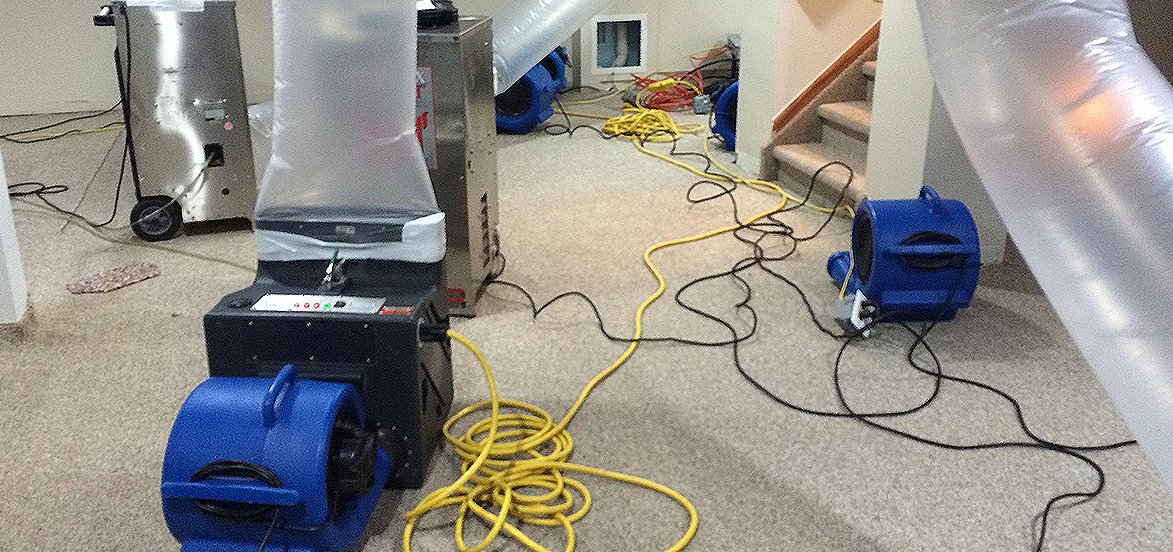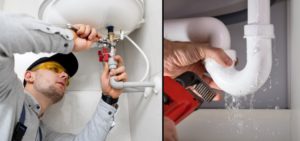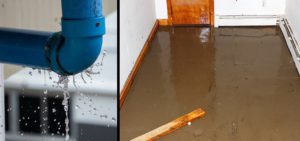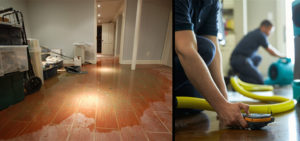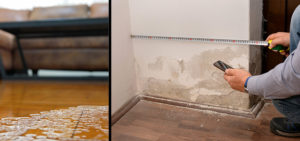10 Most Important Tips About Water Damage Restoration
Water damage can come as a sudden, unforeseen event on your property. Stagnant water is a breeding house for a lot more than just insects and other multiplying organisms.
When left untreated, it can cause several health hazards and become a root for structural damage. Prompt action on water damage repairs is crucial for saving both money and time in the long run.
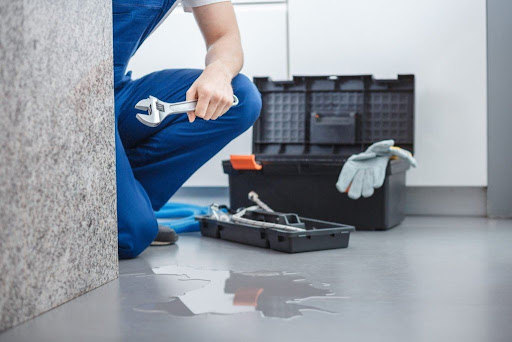
It could be a faulty household appliance, a busted pipe, an overloaded washing machine, sewage backup, or simply just rainwater. A house flood can be devastating, and when it comes time to fix water damage, it can burn a hole in the pocket.
Are You Having A Water Damage Emergency?
There could be numerous ways one can experience a water damage emergency.
A snap in the cold weather may have resulted in burst pipes, or a leak might have developed in your old water heater. Recent storms, including natural disasters like hurricanes and tornadoes, could have led to extensive flooding.
Even for the most prepared, basement flooding can also happen due to the failure of a sump pump.
Water damage in a running household or commercial building is a very non-surprising thing as it occurs suddenly. However, the most common reasons could be broken pipes, clogged gutters, poor drainage, faulty washing machine or dishwasher hose, and of course, naturally occurring disasters.
Whatever be the cause of water damage, if left unattended or untreated, the water can damage your property and negatively impact your health. Things like dust mites, mold, and bacteria all thrive in warm, humid areas.
Water damage restoration services in Irvine could help return your premises to the way it was before the damage occurred. Water damage restoration is a specialized service that removes water from your home and restores it to a livable, pre-damaged condition.
What Should You Keep In Mind Regarding Water Damage Restoration?
1. Timing Is The Key:
If you are suddenly dealing with water damage at your home, knowing what to do first is the key to stopping further damage. First and foremost is to identify and locate the source of the leak and temporarily fix or bar it with the best available tools.
The power tip here is if you are not able to pinpoint the leak or problem, just immediately turn off your home’s main water supply.
Water damage repair in the initial moments is mainly about how prompt your action is.
- Familiarize yourself and other family members with water shut-off valves for quick access and label accordingly. Swift action is critical to minimize loss, mitigate risk, and protect assets.
- Anything electrical presents the greatest danger. Keep an eye out for water coming through light fixtures or electrical boxes.
- Immediately shut off an electrical box, circuit box, and meter panel if affected by water. Once the electricity is shut down, cord off the affected area with caution tape.
- Controlling multiplying growth of microorganisms during a water damage restoration project may require the use of chemical agents that act as biocides.
- The concerned authorities have defined three levels of biocidal activity:
- Sanitizers and Disinfectants – They are explicitly designed to destroy or inhibit the new growth of microorganisms. Hence, they reduce the number, but not necessarily their spores.
- Sterilizers – Designed to knock down all micro or macro organisms, i.e., fungi/molds, bacteria, viruses, etc., and their spores.
2. Inspection & Assessment:
A proper evaluation of the situation needs to be done in order to understand whether you will clean up the area yourself or hire water damage restoration experts in Irvine.
While carrying out the inspection, consider a few of the following factors:
- Water Volume: You can typically manage anything from small to moderate amounts of water damage on your own if you have the proper tools. However, if there is immense flooding and it is not getting dried despite your efforts, it is best to call a professional in Irvine.
- Source of Damage: Before diving into water damage restoration, you need to understand and locate the source of the damage. There are three types of water you need to look out for when you have a flooding issue in your home.
- Clean water from rain or leaky pipes. This one is not to worry much about and is safe to handle.
- Gray water could be leaking from appliances like your dishwasher, toilet, or washing machine. This one may be slightly contaminated. With the proper precautions, you can clean this yourself.
- Blackwater is the one that needs all your attention and careful handling. It comes from the sewer or flooding from a nearby water source such as a river. It often contains health hazards and is unsafe to handle.
- Damage Level: Lastly, you’ll want to assess the level of damage. Damage on a simpler level can often be handled by the homeowner. However, significant damage can be dangerous to repair without the help of a professional.
- For example, if flooding on an upper level has seeped through the floor onto the ceiling, the damage is beyond your ability to safely restore.
3. Get In Touch With Your Insurance Company:
As soon as you find water damage in your premises, contact your insurance company at the earliest. They will guide you through what to do to prevent water damage from spreading. They also would help you with covering some of the damages, making the water damage restoration cost less expensive.
If you do not contact the insurance provider as soon as you learn about the water damage, you may accidentally be more responsible for the bigger damage cost incurred. Even if you are unsure that you are covered for water damages, call anyways just to find out.
4. Not Every Damage Can Be Repaired In The Same Way:
The nature of every material ranges on the basis of porosity and how they behave when they come in contact with water. Some are extremely porous, while some may be harder, which leads them to require different maintenance in case of water damage.
Dry walls and furniture will have to be handled with certain protecting agents against growing molds in them whereas mattresses and other tapestries will need to be dry cleaned based on material care instructions.
5. Restoration By Water Extraction:
The next step in the water damage restoration process is to remove standing water via water extraction. Standing water or moist floorings can continue to damage your home, causing further deterioration, so you should remove them all as quickly as possible.
Water extraction is especially vital when you are dealing with a flooded basement, as standing water in the basement leads to severe mildew and mold growth.
Professionals use mechanized extractors to remove water during the extraction process. These high-powered pumps and vacuums are designed to absorb all standing and surface water from your premises at a very fast pace.
Several different types of extractors may be used to remove water, including:
- Submersible pumps
- Truck-mounted vacuums
- Portable wet/dry vacuums
After you extract the standing water, additional inspections may be required to determine the remaining moisture levels. It will help identify whether you need to remove the carpeting or hardwood floors or not.
6. Cleaning and Disinfecting:
It is a thorough procedure to be carried out. So, there are no after remains of any damage or even damage repair materials that were used throughout.
During this whole restoration process, the focus is also on preserving the personal property as much as possible.
To perform this step ideally, you need professionals as they have experience in the safety and sanitization requirements of water-damaged homes. They will carry out through many forms including,
- Spray and wipe cleaning
- Wet cleaning
- Dry cleaning
Necessary mold remediation, use of foam, abrasive or immersion cleaning techniques to ensure every item is cleaned as thoroughly as possible.
7. Final Restoration:
Now that you get control over the water damage, professionals took after-care steps to stop further damage along with the leak and fault repairs; your house returns to the state it was in before the damage occurred. All materials that get damaged or removed permanently will now be fixed or replaced. Restoration projects may be simple or extensive, depending on the amount of permanent damage that occurred.
In some fortunate cases, restoration may require relatively simple repairs, such as carpet cleaning, mattress drying, or drywall repair. In others, restoration work is extensive and will require complete reconstruction on parts of your home.
8. Regular Maintenance Can Go A Long Way:
Things like bad storms and other natural calamities can lead to flooding and water damage, but most water damage is caused by leaky roofs, pipes, or other home issues.
Believe it or not, regular maintenance can go a long way when it comes to water damage prevention.
Regular checks with your home gutter line, roof, and other plumbing work should be in place at regular intervals.
And if you own a commercial building, investing in a professional inspection once or twice a year is not a bad idea.
9. Drying and Dehumidifying:
After all the excess water is physically removed, the water damage repair companies in Irvine now begin the process to extract all the excess moisture or water content from the premises.
At this stage, the home may look dry, but some materials may be wet to touch. If left unattended, these materials may develop further damage such as warping, breaking, or growing mold.
Industrial-quality air movers and dehumidifiers are used in this procedure to dry out any materials that may still contain water or were too challenging to access during extraction.
In case this process is being handled by water damage repair professionals in Irvine, the water remediation specialists will monitor moisture levels in the walls and floors of the affected areas to determine when your home is dry. After that, the professional will begin cleaning processes.
10. Do It Yourself Restoration:
While water damage repair can be very stressful for homeowners, it is possible to do it yourself if it is on a controllable small scale.
When taking water damage restoration on your own, it’s vital to properly assess the situation before moving forward to avoid any health hazards.
Here’s what can be done:
- Disconnect all the electronic outlets
- Inspect mold
- Dry and dehumidify the area out
- Take out any materials that have been damaged
- Disinfect and sanitize the whole premises
- Keep regular checks for the following few days
Conclusion:
Water can cause more than structural damage to your home. It can also present a serious health hazard.
It doesn’t take long for standing water to breed mold and bacteria, pathogens that can cause severe respiratory illnesses, and other problems. Water damage restoration is an elaborate process, don’t shy away to call All Star Plumbing & Restoration at 949-541-6940 to overcome water damage in Irvine.


